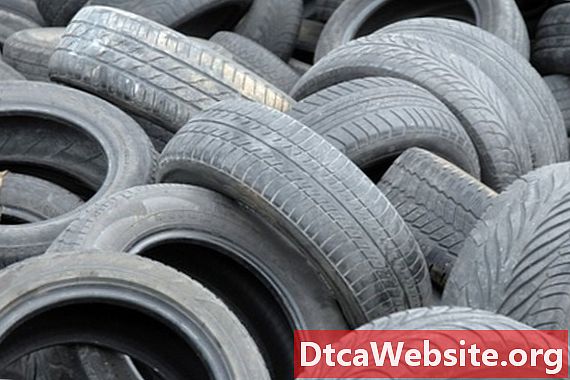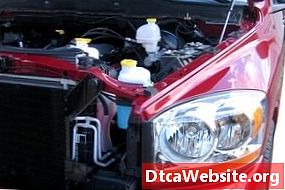
Contenu
- When Is a Tire With Dry Rot Too Dangerous?
- UV Radiation--One Cause of Tire Dry Rot
- Ozone--Another Cause of Tire Dry Rot
- Protecting Your Tires Against Dry Rot Part I: Keep Tires Properly Inflated
- Protecting Your Tires Against Dry Rot Part II: Be Wary of Tire Products

Dry rot is generally referred to as the breakdown or decay in wooden materials. However, the term has been used colloquially in other fields as well, including tire deterioration, although rubber on tires does not actually rot. When cracks begin to occur within a tires rubber, it is said to have dry rot.
When Is a Tire With Dry Rot Too Dangerous?
Dry rot is considered to have occurred on a tire when cracks begin to emerge on the tires rubber. The rubber is what holds the tire together. However, whether the dry rot is dangerous is determined by whether you can see the tires cords. The cords are what cause the tire to resist inflation pressure. If the cords begin to deteriorate--in other words, if the cracks reach the cords--the vehicle is dangerous to drive on. Therefore, replace a tire if the tires cords are exposed.
UV Radiation--One Cause of Tire Dry Rot
Dry rot can be caused by a number of factors. One of the major causes is excessive exposure to ultraviolet rays. One general type of UV stabilizer is called a "competitive absorber." Competitive absorbers absorb the UV light, instead of the tire sidewall, and convert the UV rays into heat so it can dissipate. The least expensive type of competitive absorber comes in "carbon black." This is why tires generally come in black, rather than unique colors. Eventually, though, UV stabilizers no longer offer protection to a tire, causing the tire to look gray.
Ozone--Another Cause of Tire Dry Rot
Another major cause of tire rot is ozone. Ozone basically eats away at the surface of a tire, causing the degradation of the sidewall. Because of this, tire manufacturers use protective waxes that create a "shield" on the sidewall when tires are in motion. For this reason, tires that are not regularly used (such as those on RVs) are more susceptible to degradation of the tires. Prevent this onset by regularly moving your vehicle. This will help create a protective coating on the tires.
Protecting Your Tires Against Dry Rot Part I: Keep Tires Properly Inflated
Dry rot in tires cannot be completely prevented, as rubber will eventually deteriorate. However, there are ways to prolong the life of a tire and keep cracks from occurring. Make sure to properly inflate your tires. Tires that are under-inflated cause added pressure to tires, further expanding cracks within the sidewall. To ensure a tire is properly inflated, check the owners manual for information on the proper pressure for your tires, and check the tires at least once a month for proper inflation.
Protecting Your Tires Against Dry Rot Part II: Be Wary of Tire Products
Tire dressings (the sprays that make tires look shiny) can also decrease the life of a tire. If tire dressings must be used, find the products that are devoid of petrochemicals and silicone oils. These ingredients can eat away at the protective waxing on the sidewalls of the tires. Also, look for tire dressings that include UV stabilizers for added tire protection.


